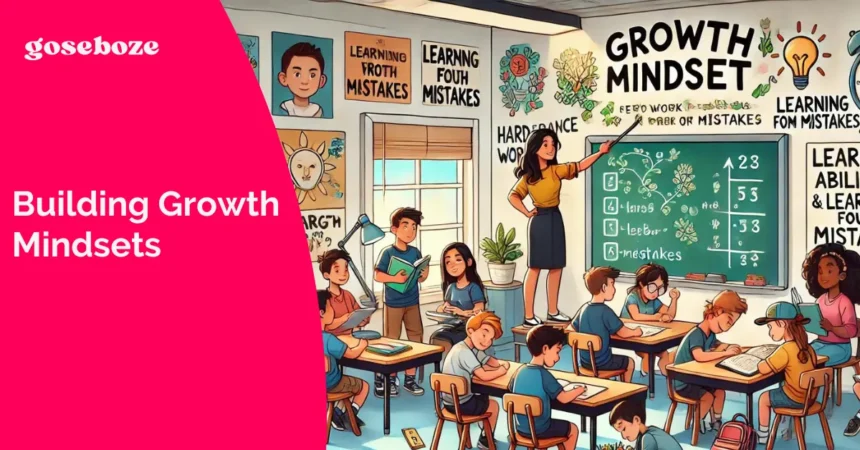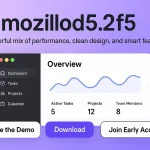A growth mindset is the belief that abilities and intelligence can be developed through hard work, dedication, and learning from mistakes. This mindset contrasts with a fixed mindset, where individuals believe their abilities are innate and unchangeable. In the educational context, fostering a growth mindset in students is crucial because it encourages them to embrace challenges, persist in the face of setbacks, and view effort as the path to mastery. Educators play a significant role in shaping this mindset, directly influencing student motivation and resilience.
The impact of educators on developing a growth mindset extends beyond academic success. When students adopt a growth mindset, they become more resilient, capable of overcoming obstacles, and more motivated to achieve their goals. This mindset empowers students to take ownership of their learning and leads to a more fulfilling and successful educational experience.
Understanding how educators can foster this mindset is essential for creating a positive learning environment that supports all students in reaching their full potential.
Investing in Educator Development
For educators to effectively nurture a growth mindset in their students, they must first be equipped with the necessary skills and knowledge. For this reason, academic institutions need to prioritize the learning and development of their educators. Continuous professional development is essential, as it helps educators stay updated with the latest teaching strategies and educational research.
One way to enhance an educator’s skill set is through pursuing an accredited online education degree. Such programs provide educators with advanced training and specialized knowledge that can significantly improve their teaching practices. These degrees make educators more effective in fostering a growth mindset by equipping them with the tools needed to encourage student motivation and resilience. Online programs, in particular, offer the flexibility that educators need to balance their professional responsibilities with their educational pursuits. This flexibility allows them to continue working while advancing their skills, making online degrees a practical option for ongoing professional development.
Read Also: Is an Online MBA Worth It? Here’s What You Need to Know
Encouraging a Positive Learning Environment
Creating a positive learning environment is foundational to fostering a growth mindset in students. When students feel supported and valued in the classroom, they are more likely to take risks, embrace challenges, and learn from their mistakes. Educators can encourage this environment by focusing on the process of learning rather than solely on outcomes. For example, praising effort, strategy, and persistence can help students understand that success comes from dedication and hard work, not just innate ability.
To promote a positive learning environment, educators can implement strategies that encourage a growth mindset. One approach is to provide constructive feedback that focuses on how students can improve rather than just pointing out what they did wrong. This type of feedback helps students see mistakes as learning opportunities rather than failures. Additionally, celebrating effort and progress, no matter how small reinforces the idea that persistence leads to improvement.
Modeling Growth Mindset Behaviors
When educators demonstrate a growth mindset in their behaviors, they show students that learning is a lifelong process. This can be as simple as sharing personal experiences of overcoming challenges or being open about areas where they are still learning and growing. When students see their educators practicing what they preach, they often adopt similar attitudes.
Modeling growth mindset behaviors involves more than sharing stories; it requires educators to actively demonstrate resilience and adaptability in the classroom. For instance, if a lesson doesn’t go as planned, an educator with a growth mindset might openly discuss what didn’t work and how they plan to improve next time. This transparency shows students that setbacks are part of the learning process and that everyone, including their teachers, can learn from mistakes.
Challenging Learning Experiences
Engaging students in challenging tasks is crucial for developing a growth mindset. When students are given opportunities to tackle difficult problems, they learn to see challenges as opportunities for growth rather than insurmountable obstacles. Educators can design lessons that push students out of their comfort zones, encouraging them to think critically and creatively. Such tasks can include problem-based learning, complex projects, or activities that require students to apply their knowledge in new ways.
Offering these opportunities helps students build resilience as they work through challenges and learn to persevere. Educators need to create a supportive environment where students feel safe to take risks and make mistakes. Encouraging a mindset where challenges are viewed as learning experiences rather than failures fosters a sense of determination and persistence.
Using Goal-Setting to Foster Motivation
Helping students set realistic and achievable goals is an effective way to foster motivation and build a growth mindset. Goal-setting gives students a clear direction and a sense of purpose, which can drive them to put in the necessary effort to achieve their objectives. When students have specific goals, they stay focused and motivated, even when faced with challenges. Educators can guide students in setting both short-term and long-term goals.
Educators should emphasize the importance of the process rather than just the outcome when discussing goals with students. Celebrating progress toward these goals, no matter how incremental reinforces the idea that growth happens over time through consistent effort. This approach motivates students to keep pushing forward and also helps them develop a positive attitude toward learning.
Building a Culture of Collaboration and Peer Support
Creating a classroom culture that values collaboration and peer support is another key element in fostering a growth mindset. Working together allows students to learn from each other’s strengths and perspectives, which can be incredibly motivating. Group activities, peer tutoring, and collaborative projects encourage students to support one another, making the learning process a collective effort.
Collaboration also helps students develop resilience as they navigate challenges together. In a supportive classroom environment, students feel more comfortable taking risks because they know they have the backing of their peers. This collective approach to learning helps students understand that challenges are a normal part of the learning process and that it’s okay to seek help when needed. As students collaborate and support each other, they build stronger relationships and develop a shared commitment to learning and growth.
Educators have a profound impact on building growth mindsets in students. Through professional development, creating positive learning environments, modeling growth mindset behaviors, offering challenging tasks, guiding goal-setting, and fostering collaboration, educators can significantly enhance student motivation and resilience. When students develop a growth mindset, they become better prepared to face challenges, persist through difficulties, and achieve their goals.








